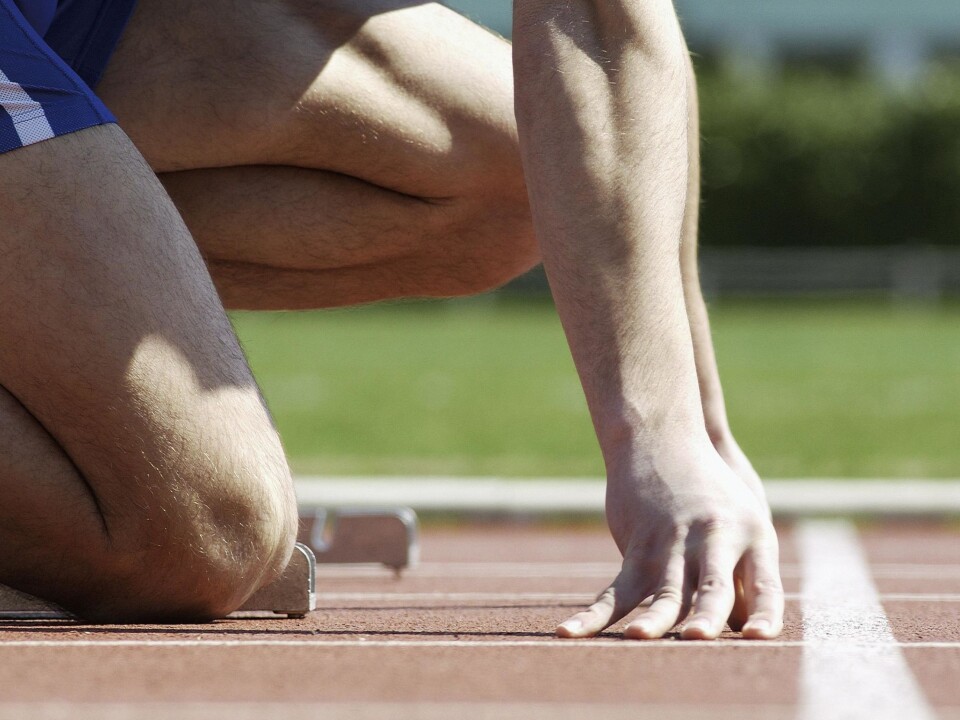
How acidosis develops during exercise
Vigorous exercise causes lactic acid to accumulate in our muscles, making them acidotic. New research shows that several key organs play a surprising role in this process – even during moderate exercise.
If you have ever tried sprinting hard on a bicycle, you will know about the heavy sensation coming from your legs. It happens because the muscles accumulate lactic acid, and this makes them acidotic.
New research shows what happens when the lactic acid concentration in the blood reaches 4 millimoles per litre (4 mmol/l). The stamina of athletes is often tested at this lactic acid level, since it is known that 4 mmol/l is the most appropriate level for exercise.
The liver is to blame
Researchers from Aalborg University and Copenhagen University Hospital have discovered that when the lactic acid concentration in the blood is 4 mmol/l, it is the liver, not the kidneys as previously thought, which is unable to eliminate lactic acid quickly enough. The concentration of lactic acid is observed to increase exponentially with the muscle workload.
The study itself was carried out by a team led by Associate Professor Stefanos Volianitis of the Department of Health Science and Technology at Aalborg University. He believes the new results could have significance for the way we view the role of various body organs during exercise.

"The study has shown that the ability of the kidneys to eliminate lactic acid is as good during moderate exercise as when the body is at rest,” he says. “One can imagine that our performance under more intensive training can be improved if the kidneys are kept in good condition by drinking plenty of fluids and avoiding too much alcohol intake."
Undeterred muscles
Hitherto, the 4 mmol/l lactic acid concentration in the blood was viewed as the anaerobic threshold – in other words, it was thought that muscles suddenly started producing a lot more lactic acid under exertion.
Anaerobic metabolism is metabolism that does not use oxygen, and typically occurs when the body first starts doing physical work. It is this form of metabolism that produces lactic acid. When the lungs get going and pump oxygen round the body in the blood, aerobic metabolism – which uses oxygen – comes into play along with the anaerobic metabolism.
The new research has revealed that there is an 'elimination limit' that occurs sooner than the anaerobic threshold, a finding that turns the previous held view of lactic acid upside down. Professor Niels Secher of Copenhagen University Hospital, who was involved in the study, explains:
"From the muscles' perspective, nothing special happens at the exercise intensity which generates a lactic acid concentration of 4 mm/l. The muscles simply produce lactic acid in proportion to the workload," he says. "So instead of it being seen as a sudden increase in the amount of lactic acid that the muscles produce, it should be seen as a reduction in the body organs' capacity to remove it."
Kidney function maintained
When the body is at rest, the liver and the kidneys do most of the work of eliminating lactic acid from the blood. The research team investigated what happens when the balance shifts and lactic acid accumulates under moderate exercise.
Nine volunteers were asked to exercise on fitness bikes until their pulse rate reached 140, which equates to 4 mmol/l lactic acid in the blood. Tests were then made to examine how the liver and kidneys coped with the workload.
"It was important to make the measurements while the volunteers were on the fitness bikes to obtain as accurate a picture as possible of the behaviour of the liver and kidneys under moderate exercise," says Volianitis.
The surprising finding was that the ability of the kidneys to eliminate lactic acid was not affected in any way by the workload. It was the liver – which normally does most of the elimination work – that was affected. This explains why it is that lactic acid starts to accumulate at this threshold level.
Magic threshold
"The most unexpected result was that the kidneys remained able to eliminate lactic acid at the same rate as when the body is at rest," says Secher. "When we exercise, extra blood is pumped to the muscles and less to the organs. During moderate exercise, the bloodflow through the kidneys drops by 30 percent, but it doesn't seem to affect their performance in the least."
Conversely, it is exactly the reduced bloodflow which stops the liver from being able to eliminate lactic acid from the blood above the 4 mmol/l threshold level.
"It is interesting to discover what happens at this level because there are countless sportspeople who measure their lactic acid concentration. Before now, it was not known why 4 mmol/l was the magic threshold," says Secher.
The results of the study have been published in the Journal of Sport Sciences.
Read the article in Danish at videnskab.dk
Translated by: Nigel Mander







